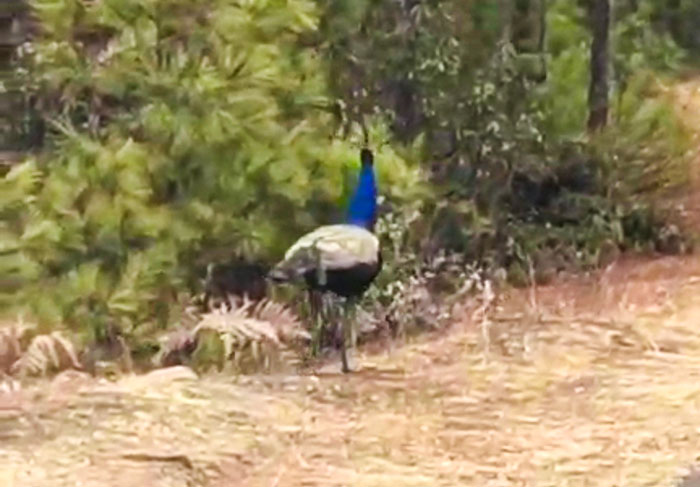
The peacocks in Haa
Choki Wangmo
To everyone’s surprise, a commuter driving from Haa to Paro spotted a juvenile peacock during the journey on the afternoon of March 7.
Lobzang Nima, a Khenpo in Ugyen Dorji Higher Secondary School, said that, at around 3pm, he spotted the peacock running along the road towards Chelela at one of the road turnings and then encountered it at the next turning. “It couldn’t fly but ran upwards. Since there were dogs around, I chased it away from the road but the bird was friendly.”
He said that he couldn’t believe the sighting and mistook the peacock for a monal pheasant but it was huge and had long legs. “I’d been living and travelling regularly on the road but never saw birds from warmer areas in one of the coldest areas.”
He said that the animals from across the borders could be migrating to Bhutan due to the clean environment.
The range officer of Haa dzongkhag, Tempa Gyeltshen, said that the office obtained pictures of the bird that was confirmed to be a peacock although, earlier, they were convinced that it was a pheasant. “The bird didn’t have a tail.”
The office is yet to confirm how the bird found along the southern areas reached Haa. He suspects IMTRAT officials might have brought in the bird as pets from India and it might have escaped. “They can survive indoors.”
The office has informed IMTRAT and is waiting for the confirmation. He said that the same bird was spotted by taxi drivers at the helipad.
Bird experts are taken by surprise. A birder said that it was unusual to see peacocks, a lowland bird at such high altitudes. “They tend to be lowland birds and fairly common in Gelephu and Samtse.”
The founder of Bhutan Birdlife Society, Tshering Tobgay, said that it was an interesting sighting if at all the bird had made a migration and not through human interference.
“Since, Indian peafowl is known to take shorter distance flights, I’m sceptical about its flight to such elevations over a long distance,” he said.
He, however, said that it could be possible since Haa shares a border with Samtse. “A few years ago, we had reports of Indian peafowl sightings at Dorokha.”
Changing weathers could be another factor affecting unusual migration of birds, he said.
An ornithologist at the Ugyen Wangchuck Institute for Conservation and Environmental Research, Sherub, who confirmed the sighting, said that the bird appears to be around two years old.
Its presence could have been triggered by human interference or dispersal. “Such movements are becoming popular in recent days along the Chelela pass,” he said.
He suspects the bird’s presence could be due to Haa’s proximity to Samtse.
The peacock is best known for its head crest and tail. With a wingspan of nearly five feet and a tail just as long, the male peafowl is “one of the largest flying birds in the world,” according to the Smithsonian’s National Zoological Park.

